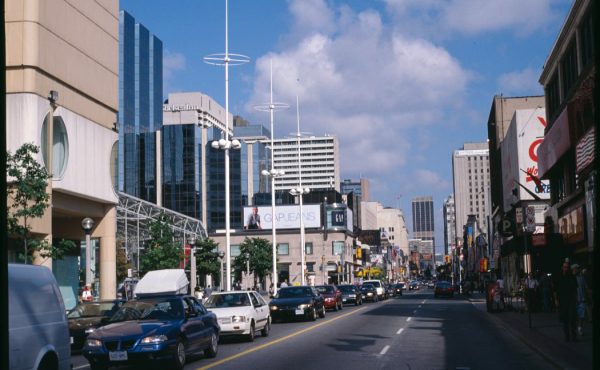Edward Burtynsky is a well known photographer of the built landscape. In his exhibition, Oil, which opened April 9th and runs until July 3 at the Royal Ontario Museum, the viewer is invited to witness the life cycle of oil. From the extraction process, to the disposal of petroleum and its by-products, to what remains of oil fields when the earth has been sucked dry. Each photograph is enormous in size and implication. Taking in all the detail enthralls the viewer. One photo, in particular, I was captivated by. The sun appears to be setting in the photo, creating a hazy orange glow so pervasive it seems to drift out of the photograph. A beach is deserted of people; instead pieces of giant ships occupy the space – spectres of a disposable age. The photo is called “Shipbreaking #13” and was taken in Bangladesh, where oil tankers and freighters are dissembled at the end of their useful life — out of sight, but with this exhibit, not out of mind.
I had the opportunity to speak with Burtynsky about his exhibit. His early career in photography focused on natural spaces, until he came across an open pit mine and was in awe of a landscape so changed by human hands. He later created Manufactured Landscapes – a critical view of factories, manufacturing centers, dams, and other massive human projects. His conviction regarding the disconnection between society and the goods society produces, consumes, and disposes of is one of the key reasons for the oil series. The world being left to our children is one that is increasingly unsustainable and of intense extraction and use. There is a blind spot in how those goods will be disposed of or their effect on the natural environment. His photographs don’t demand that the viewer take a position — merely that a conversation or critical thought about oil consumption take place. His slightly pessimistic outlook for our collective future was not without a glimmer of hope. Cities, he said, are our greatest chance to move towards sustainability. Buildings and public transport are capable of being designed in such a way to create resilient and healthy spaces. Oil is sure to stir up a conversation, an idea about something different, and the possibilities for a brighter future.



